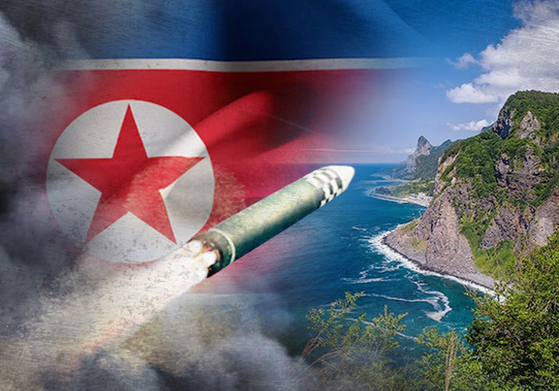Responding to maximum provocation
Published: 03 Nov. 2022, 19:47
Updated: 03 Nov. 2022, 23:43

1
The author is a professor of aerospace and mechanical engineering at Korea Aerospace University.
On Wednesday morning, North Korea fired a barrage of 10 or more missiles, including three short-range ballistic missiles (SRBMs), in both the East Sea and the Yellow Sea surrounding the Korean peninsula. One of the three ballistic missiles fell into waters not far from inhabited Ulleung Island off the eastern coast.
According to the Joint Chiefs of Staff (JCS), the SRBM plunged into international waters just 26 kilometers (16 miles) south of the Northern Limit Line (NLL) in the East Sea and 57 kilometers off the Sokcho city on the east coast.

Since one landed 167 kilometers to the northwest of Ulleung Island on the East Sea, the missile launched from Wonsan, North Korea, could have traveled around 180 kilometers. They are suspected to have been fired off from the North Korean KN-25, a multiple rocker launcher for controlled ballistic trajectory.
North Korea firing a missile toward South Korea beyond the NLL has been the most daring provocation since the Korean Peninsula was bisected seven decades ago. The North’s missile tests have mostly been for saber-rattling and upping tensions. But the latest move is a direct threat against the South. As the missile was headed toward Ulleung Island, islanders had to run for underground shelters after air raid alarms went off. It was a real threat. The South Korean military flew a squadron of fighter jets and fired air-to-surface guided missiles into international waters to the north of the NLL.
Pyongyang announced that it has carried out military drills for its tactical nuclear operation unit from Sept. 25 through Oct. 9. It claimed that the training was to verify its war deterrence and nuclear counterattack ability and warn against the ongoing South Korea-U.S. joint drills. During the period, North Korea fired off a range of missiles — mostly short-range ones under test since May 2019 — except for the new Hwasong-12 mid-range missile that can fly 4,500 kilometers.
Amidst the missile launches, North Korea said it had conducted an unusual test. On Sept. 24, a ballistic missile tipped with a nuclear warhead was blasted off from an underwater launcher in a reservoir in the northwest region of the country. South Korean military authorities first thought it was fired from a mobile launch vehicle in Taechon, Pyongbuk in the northwestern province. Few would have imagined a missile launch from a reservoir.
Underwater missile launches can be carried out by two means. One is using the unit of mobile underwater launcher consisting of a submersible barge and launching tubes. Another is using a fixed underwater silo built by digging into the bottom of a reservoir. Since North Korea claimed to have built an underwater launching facility, there is a possibility that it has developed an underwater silo for missile launch.
Storage for nuclear warheads is a top military secret. Through the latest missile launch, North Korea might have tested out its underwater storage of nuclear warheads, transportation and safe maintenance process. That means North Korea showed its capability to evade the surveillance of South Korea and the U.S. and fire tactical nuclear weapons from underwater without being detected by their spying assets.
North Korea has been developing various means to launch missiles to destabilize the allied forces ability to use stealth assets to pre-identify the firing locations of nuclear missiles and destroy them before they are launched. President Yoon Suk-yeol publicly mentioned the need for a preemptive strike on the North’s nuclear missiles through the Kill Chain system. The tensions between the two Koreas have gone up to unprecedented levels.
To carry out a preemptive attack, South Korea must be able to detect the signs of an imminent nuclear attack in real time. Even with full employment of surveillance systems across the space, air, waters and ground, there is a limit to technological precision. The U.S. Army gave up the attempt during the Gulf War in the early 1990s. Even after detecting signs of launch, a preemptive strike isn’t easy.
North Korea could be displaying confidence in its nuclear weapons and operation ability by daring to fire a missile across the NLL on the East Sea. It is sending a message to the allies that its nuclear capability exceeds their response.
The purpose of the North’s provocations is clear. It wants to escalate military tension to the maximum level through its seventh nuclear test to gain international recognition as a nuclear weapons state.
Translation by the Korea JoongAng Dsily staff.










with the Korea JoongAng Daily
To write comments, please log in to one of the accounts.
Standards Board Policy (0/250자)